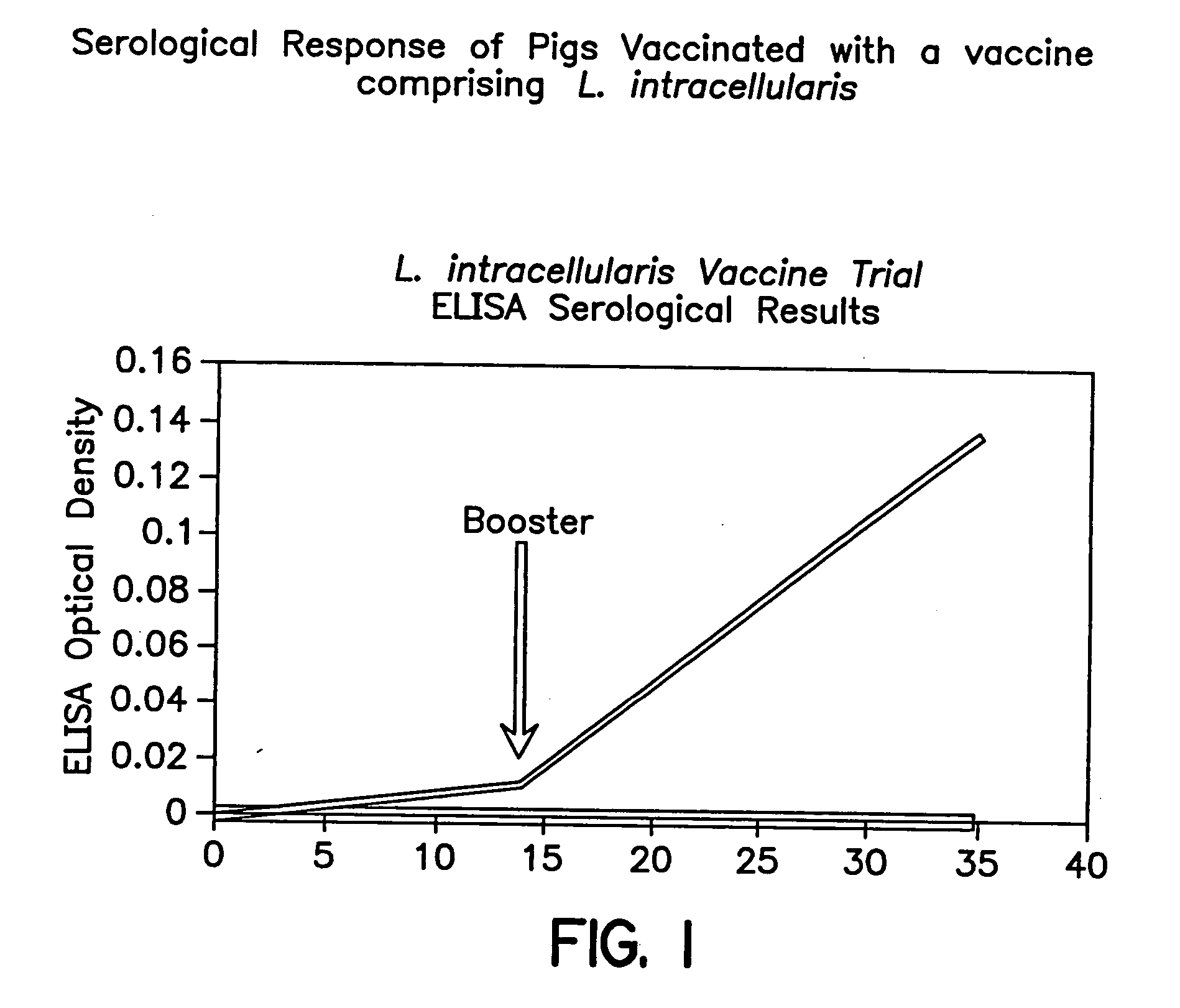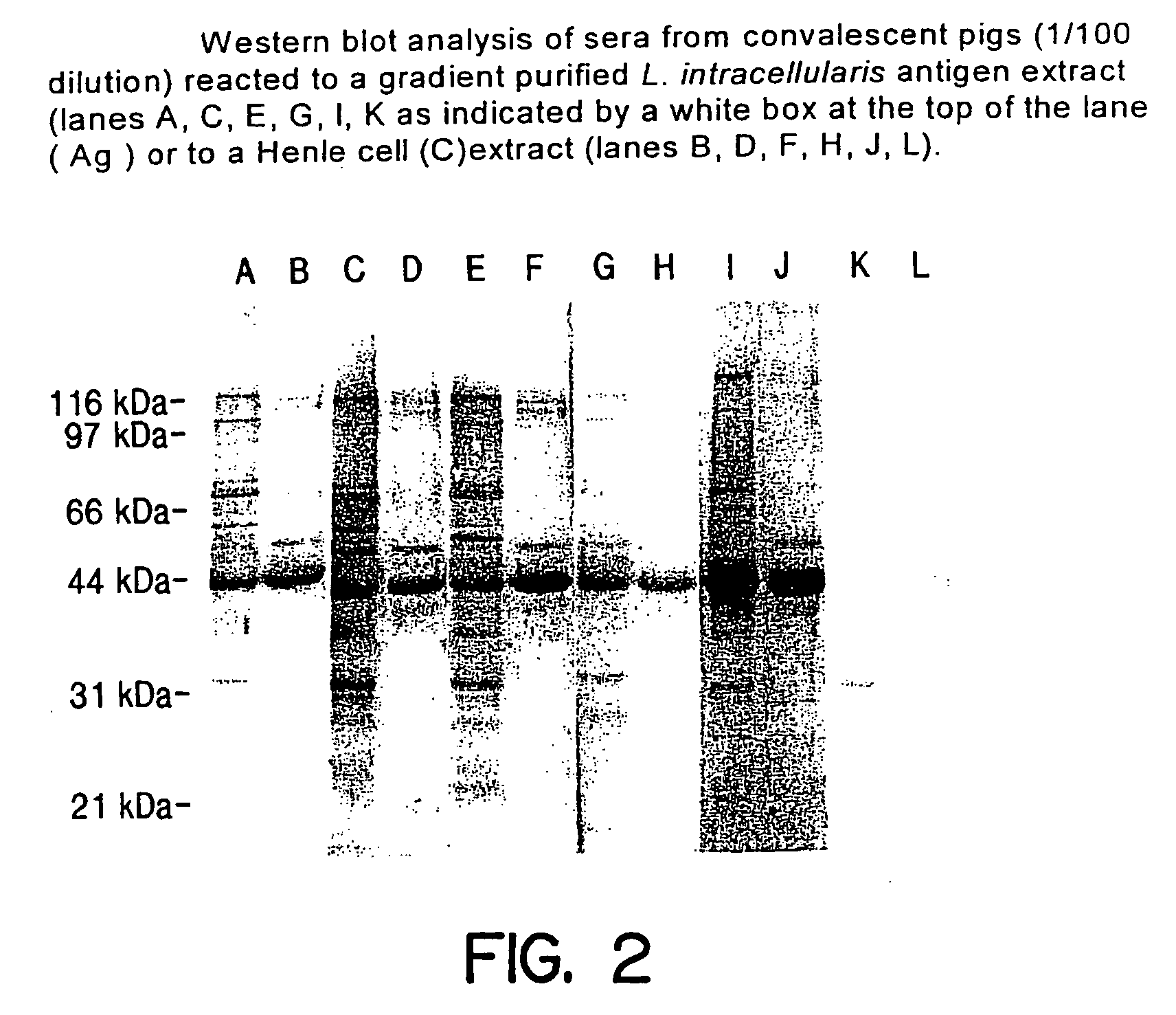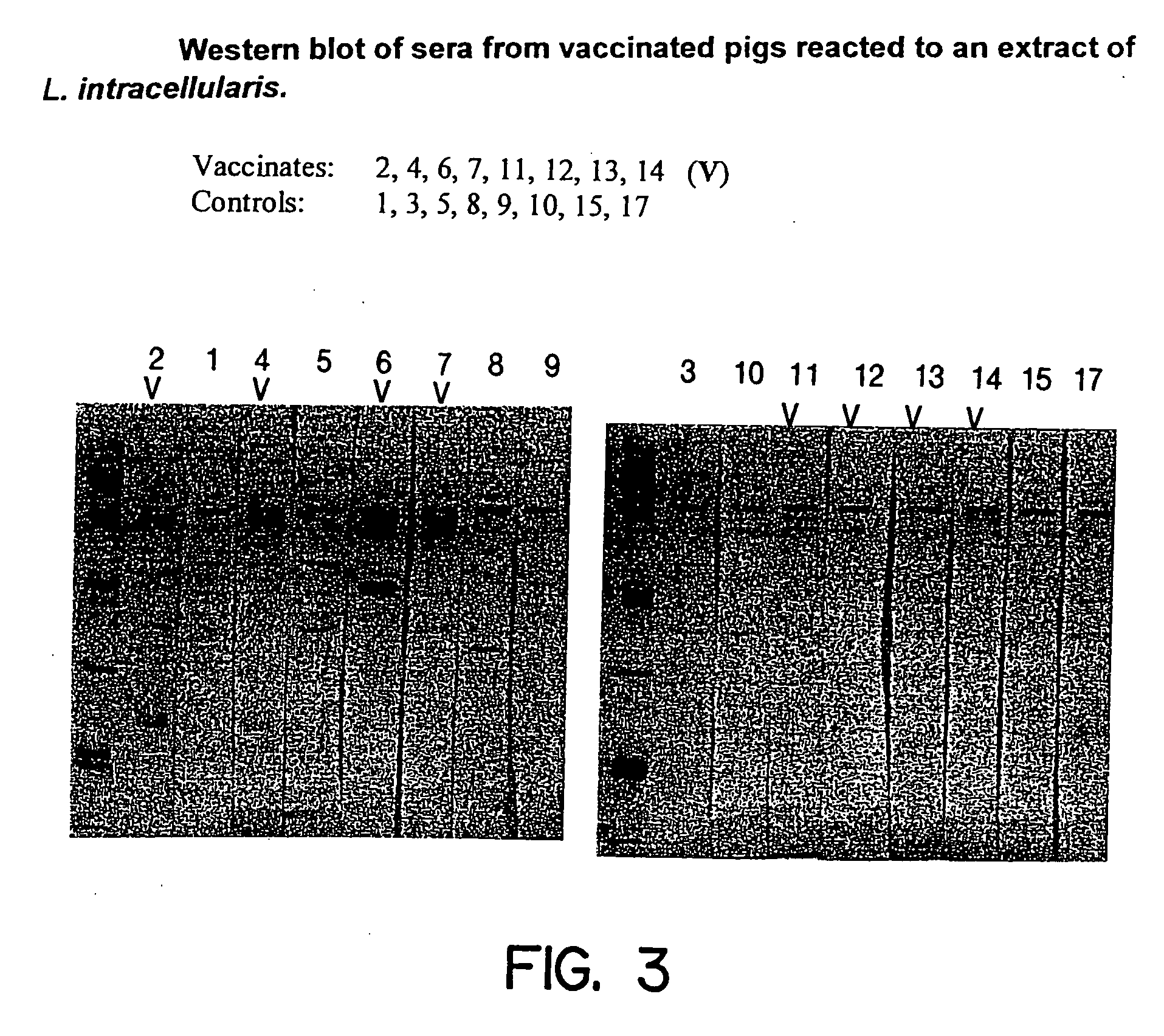Vaccines for proliferative ileitis and methods of making and using the same
a technology for ileitis and vaccines, applied in the field of vaccines for proliferative ileitis, can solve the problems of limited effective control measures for proliferative ileitis, porcine proliferative enteritis, and proliferative ileitis of porcine proliferative enteritis, and achieve the most potential use potential in diagnostic and antigen quantitation, and inhibit the development of cytopathic
- Summary
- Abstract
- Description
- Claims
- Application Information
AI Technical Summary
Benefits of technology
Problems solved by technology
Method used
Image
Examples
example 1
[0050] Growth of L. intracellularis in tissue culture has been routinely accomplished. One method involves growing the organism in Henle 407 cells (ATCC No. CCL6) by infecting the cells with L. intracellularis bacterial seed organisms isolated from gut homogenates of pigs exhibiting clinical proliferative ileitis. Sections of intestine from infected pigs were removed, washed to remove mucus and suspended in Hanks Balanced Salts Solution (HBSS) containing hyaluronidase to detach epithelial cells from the lamina propria. The sections were then washed and the enterocytes were harvested by centrifugation. The enterocytes were washed a second time and then were exposed to gentamycin sulfate and amphotericin B for 24 hours at 4° C. to kill contaminating gut microflora. The treated cells were harvested, washed in HBSS, and lysed with 0.5% deoxycholate for 1 hour at 37° C. With constant agitation to release the intracellular organism. The lysates were passed through a sterile 0.65 u membran...
example 2
[0051]L. intracellularis also has been grown on rat intestinal epithelial cells (IEC), ATCC No. 1589. Since growth of L. intracellularis on these cells does not result in CPE, the monitoring of growth was accomplished either by use of standard PCR methods or by standard fluorescent antibody detection methods using a monoclonal antibody (MoAb). Quantitation via the PCR method was measured via use of a densitometer and competitive PCR procedures known to the art.
[0052] The process of growing L. intracellularis on IEC cells comprised the steps of 1) inoculation of the IEC cells with L. intracellularis organisms; 2) incubation of the infected IEC cell culture in a media capable of supporting growth of L. intracellularis at 37° C. in the presence of atmospheric conditions which allow growth of the organisms as well as growth of the IEC cells; 3) harvesting the L. intracellularis and 4) passaging the culture at approximately ten (10) day intervals to scale up the yield of organisms.
[005...
example 3
[0058]L. intracellularis IL-B (ATCC No. 55370) was grown in IEC cells using T-25 flasks, according to the procedure described previously (Example 2). Infected IEC cells were cultured for 5 to 7 days in gaspaks in an atmosphere of CO2:O2:N2 (8:8:84). Supernatant was removed and the cells were treated with 0.2% KCL for 5 min. and 0.1% KCL for 25 min. The KCL was removed and the cells were harvested by scraping. The harvested cells were passed through a 22 gauge needle to break down the cell structure. The cell lysate was subjected to low speed centrifugation for 10 min. and the semi-purified organisms remaining in the supernatant were harvested by high speed centrifugation. Antigen was pooled from 25 flasks and a portion of the antigen was subjected to a french press treatment for the production of soluble antigen. The remainder was aliquoted and stored at −70° C. This soluble antigen was formulated into a vaccine according to the following procedure. Vaccine antigen was formulated wi...
PUM
| Property | Measurement | Unit |
|---|---|---|
| molecular weights | aaaaa | aaaaa |
| molecular weights | aaaaa | aaaaa |
| molecular weights | aaaaa | aaaaa |
Abstract
Description
Claims
Application Information
 Login to View More
Login to View More - R&D
- Intellectual Property
- Life Sciences
- Materials
- Tech Scout
- Unparalleled Data Quality
- Higher Quality Content
- 60% Fewer Hallucinations
Browse by: Latest US Patents, China's latest patents, Technical Efficacy Thesaurus, Application Domain, Technology Topic, Popular Technical Reports.
© 2025 PatSnap. All rights reserved.Legal|Privacy policy|Modern Slavery Act Transparency Statement|Sitemap|About US| Contact US: help@patsnap.com



